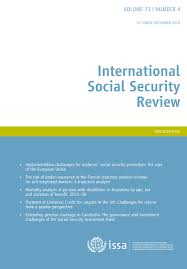
Do public works programmes foster climate resilience? Conceptual framework and review of empirical evidence
Burchi, Francesco / Anastasia Terskaya / Tekalign Gutu Sakketa / Elisabetta AurinoExterne Publikationen (2025)
in: International Social Security Review 78 (2/3), 145-171
DOI: https://doi.org/10.1111/issr.70004
Open access
Public works programmes (PWPs) are pervasively used to tackle poverty and unemployment, and to build infrastructure and skills in low- and middle-income countries. While their impacts on poverty, food security and labour outcomes have been widely documented, there is little research focusing on the role of PWPs in supporting household climate resilience in the global context of a deepening climate crisis. To fill this gap, we propose a conceptual framework that links the different components of PWPs – wages, infrastructure, and skills development – to household capacity to cope with, and adapt to, climate-related shocks. We use this framework to guide our review of empirical experimental and quasi-experimental evidence on the multiple short-term and long-term effects of PWPs on resilience to weather shocks, such as floods, droughts and cyclones. Such evidence mostly draws from a few programmes in India, Ethiopia and Malawi. Overall, we find that, through the wage component, PWPs can be effective in enhancing household resilience through increasing savings and productive investments. However, these benefits usually only materialize in the case of regular, long-term programmes, as opposed to ad-hoc/temporal PWPs. PWPs’ infrastructure component can play a crucial role in supporting households’ long-term capacity to adapt to shocks, especially in the case of “climate-smart” infrastructure, with positive externalities beyond direct programme beneficiaries to communities. There is a key evidence gap investigating the effects of PWPs through the infrastructure component on both beneficiaries and other community members, as well as on the role of on-the-job training and its capacity to strengthen resilience in combination with the infrastructure component. Evidence from different socioeconomic contexts is also scarce. Another key gap relates to the identification of the main mechanisms through which these relationships operate. Filling these gaps will support policy makers taking decisions about when to implement PWPs (especially in comparison with other social protection interventions), and how to design them to tackle vulnerability to climate change.


